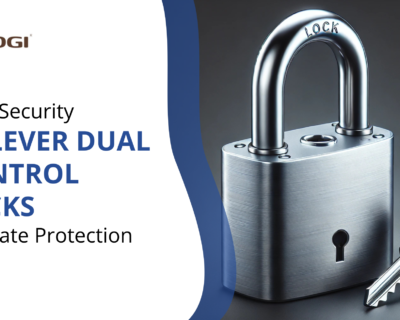Blog

Jewellery Safes vs. Home Lockers: Which Security Solution Is Right for Your Valuables?
In today’s world where security concerns are paramount, the protection of precious jewellery and valuables demands thoughtful consideration. Loss, theft, physical damage, and environmental factors can all threaten our most treasured possessions – especially high-valued items like gold or diamond accessories that represent significant financial investments. Two primary security solutions dominate the market: jewellery safes installed at home and bank lockers situated within financial institutions. Each option presents distinct advantages and limitations that must be carefully weighed against your specific needs, lifestyle, and security requirements.
Understanding the Basics
Contents
Jewellery Safes Defined
Jewellery safes represent high-security storage solutions maintained within your residence, providing immediate proximity to your valuables. These specialized containment systems are specifically engineered to protect smaller, high-value items like rings, necklaces, watches, and other precious items from theft, damage, and unauthorized access. Unlike generic storage containers, proper jewellery safes incorporate sophisticated security features including hardened steel construction, pry-resistant doors, and advanced locking mechanisms designed to thwart determined intruders.
The market offers considerable variety in jewellery safes, ranging from compact personal units to substantial floor models. As noted by Yogi Safe, a leading manufacturer in the security industry, their products span sizes from modest 28″H x 22″W x 22″D models perfect for personal use to imposing double-door models measuring 72″H x 42″W x 30″D designed for commercial enterprises. This diversity ensures solutions exist for virtually any spatial requirement or security need.
Home Lockers Explained
Home lockers, often referred to as bank lockers or safety deposit boxes, are depositories found inside financial institutions where clients can store valuables with access restricted to banking hours. These specialized storage units leverage the bank’s comprehensive security infrastructure – including armed guards, surveillance systems, and controlled entry points – to provide heightened protection beyond what’s typically achievable in residential settings.
Bank lockers have established themselves as trusted security solutions precisely because they embed your valuables within multi-layered institutional security systems. According to security experts, “Banks have long been recognized as a secure place to keep our hard-earned money and high-value jewellery. Because of the advanced security measures (surveillance systems, biometric access, and round-the-clock monitoring) they implement, you will feel more secure with your valuables”.
Security Features Comparison
Jewellery Safe Security Innovations
Modern jewellery safes have evolved far beyond simple locked boxes, incorporating sophisticated protection mechanisms that rival commercial security systems. Premium models feature composite construction with layers of hardened steel and concrete, making them resistant to drilling, cutting, and prying attempts. Lock technologies range from traditional key mechanisms to advanced electronic systems with time-delay features that prevent rapid access even if correct codes are entered.
The integration of Internet of Things (IoT) technology has revolutionized home security systems, including jewellery safes. These smart systems can include motion detection, door status monitoring, and instant alerts to your mobile device. As one technical review notes, “If an intruder opens the locker by force, the sensors will detect the status… and send an alert notification message to the mobile immediately”. This real-time notification capability transforms passive security containers into active monitoring systems.
Bank Locker Security Advantages
Bank lockers operate within environments specifically designed to prevent unauthorized access through multiple security layers. Financial institutions implement comprehensive security protocols including round-the-clock surveillance, armed security personnel, biometric access controls, and fortified vault construction that significantly exceeds residential security capabilities.
Bank lockers offer “greater restrictions that minimize the risk of theft” compared to home safes. Another significant advantage is their resilience against environmental threats – they are “disaster-resistant, enduring fires, floods, and other natural calamities”. This protection extends beyond what most residential safes can provide, particularly against catastrophic events that might destroy an entire home.
Accessibility and Convenience
The 24/7 Access Advantage of Home Safes
The primary advantage of jewellery safes lies in their continuous accessibility. With home installation, you maintain complete control over your valuables without external restrictions. This independence proves invaluable during emergencies or unexpected situations requiring immediate access to important documents or assets.
The convenience factor cannot be overstated – as noted by security experts, “Storage within your home means 24/7 access, you can check it, and use it whenever you need to”. This unrestricted access allows for spontaneous decisions to wear particular pieces or retrieve documents without planning around institutional operating hours.
Bank Locker Accessibility Limitations
While bank lockers offer superior security in many respects, their accessibility represents their most significant limitation. Access is strictly confined to banking hours, which typically exclude evenings, weekends, and holidays – precisely the times when you might need formal jewellery for special occasions.
This restriction creates practical challenges for frequent access needs. “Its first and obvious drawback is the limited accessibility since you can only get hold of your jewellery during banking hours, so it is not a reliable option during emergencies”. This constraint requires forward planning and may prove inconvenient for those who regularly use their stored items.
Cost Considerations
Jewellery Safe Investment Analysis
Purchasing a quality jewellery safe represents a significant upfront investment, with prices varying dramatically based on size, security features, fire resistance ratings, and brand reputation. Entry-level models suitable for basic protection start around $200-300, while sophisticated high-security options can exceed several thousand dollars.
Despite the substantial initial outlay, jewellery safes often prove more economical long-term compared to bank lockers. The one-time purchase eliminates recurring fees, potentially generating savings within just a few years depending on local bank locker rates. Additionally, home insurance premiums may decrease with the installation of approved security safes, creating further financial benefits.
Bank Locker Ongoing Expenses
Bank lockers operate on a rental model requiring annual fees that increase over time. These fees vary significantly based on location, institution, and locker size, with premium locations in metropolitan areas commanding substantially higher rates than smaller community banks.
Beyond the base rental cost, additional expenses may include access fees, key deposits, and potential penalties for exceeding allocated access frequency. Comprehensive documentation requirements may also incur indirect costs through time investment and administrative effort. As noted in industry analyses, bank lockers require “extensive documentation which will require your time and effort to accomplish”.
Insurance and Liability
Home Safe Insurance Considerations
Most standard homeowner’s insurance policies offer limited coverage for jewellery and valuables, often capping at amounts well below the actual value of fine jewellery collections. While installing a quality home safe may increase coverage eligibility or reduce premiums, separate riders or specialized valuable articles policies remain essential for comprehensive protection.
Insurance companies typically classify safes according to security ratings and may require specific certifications to qualify for premium reductions or expanded coverage. When selecting a jewellery safe, confirming insurance compatibility beforehand ensures maximum financial protection for your investment.
Bank Locker Coverage Limitations
Contrary to common assumptions, bank lockers do not automatically include insurance coverage for stored contents. While some institutions offer coverage options, “it may not actually cover the full value of your precious metals”. This limitation creates potential liability gaps requiring supplemental insurance arrangements.
The legal relationship between banks and locker renters represents a bailment rather than insurance, meaning institutions assume limited liability for contents. This distinction carries significant implications for recovery options following theft or damage, necessitating careful examination of contractual terms and independent insurance arrangements.
Privacy and Confidentiality
Personal Control with Home Safes
Home safes offer complete privacy regarding both the existence of the safe and its contents. Nobody beyond trusted household members need know about your security arrangements or valuable possessions, eliminating potential information leakage that could increase theft risk.
This confidentiality extends to financial matters – no formal record exists of items stored in personal safes, unlike bank lockers which often require content declarations for regulatory compliance. For privacy-conscious individuals, this autonomous control represents a significant advantage over institutional storage options.
Institutional Privacy Protocols
Bank lockers provide structured confidentiality within institutional frameworks. Access requires formal identification protocols, creating accountability trails that deter unauthorized entry attempts. These systems ensure your items remain untouched by others, with legal penalties for institutional violations of privacy.
The formalized access procedures include biometric authentication in modern facilities, creating robust verification systems that prevent impersonation attempts. These sophisticated protocols exceed typical home security measures, though they necessarily involve sharing access information with banking personnel.
Situational Factors to Consider
When choosing between jewellery safes and bank lockers, several practical considerations should influence your decision:
- Value threshold: For extremely high-value collections (particularly those exceeding insurance coverage limits for home storage), bank lockers provide superior protection despite accessibility limitations.
- Access frequency: Daily or weekly access needs strongly favor home safes, while rarely-accessed inheritance pieces or investment-grade jewellery might benefit from bank locker security.
- Travel patterns: Frequent travelers might prefer bank lockers for enhanced security during extended absences, though modern IoT-enabled safes can provide remote monitoring capabilities.
- Residential security: Overall home security infrastructure significantly impacts safe effectiveness – sophisticated alarm systems, monitoring services, and secure neighborhoods enhance home safe viability.
- Emergency access requirements: Documents like passports, medical directives, or emergency funds necessitate immediate accessibility, favoring home storage solutions.
Expert Recommendations and Best Practices
Selecting the Optimal Jewellery Safe
When investing in a jewellery safe, security experts recommend focusing on these critical factors:
- Appropriate security rating: Choose safes certified by recognized testing organizations with ratings suitable for your collection’s value.
- Correct sizing: Purchase safes with at least 25% more capacity than currently needed to accommodate collection growth.
- Professional installation: Safes weighing less than 1,000 pounds should be professionally anchored to prevent removal during burglaries.
- Advanced locking mechanisms: Consider dual-authentication systems combining physical keys with digital codes for maximum security.
Fire protection rating: Select safes with minimum 30-minute fire ratings at 1,700°F for document and jewellery protection.
For enhanced protection, integrate IoT technology that enables “remote monitoring… through a mobile app or a web interface” allowing owners to “keep track of who is accessing the locker”.
Maximizing Bank Locker Security
For those selecting bank lockers, these expert-recommended practices ensure optimal protection:
- Inventory documentation: Maintain detailed photographic records of all stored items with appraisal certificates stored separately.
- Strategic access scheduling: Establish regular access patterns during non-peak hours for privacy and efficiency.
- Supplemental insurance coverage: Secure independent insurance specifically covering items during storage and transit to/from the bank.
Proper jewellery preparation: Consider specialized storage containers within the locker to prevent scratching and damage between pieces.
Conclusion
The choice between jewellery safes and bank lockers ultimately depends on your specific security needs, lifestyle requirements, and risk tolerance. Home safes offer unparalleled convenience and accessibility with increasingly sophisticated security features, particularly with modern IoT integration. Conversely, bank lockers provide institutional-grade protection with superior disaster resistance but impose significant access limitations.
For many jewellery collectors, the optimal solution involves a strategic combination of both options – utilizing home safes for frequently-worn pieces and essential documents while reserving bank lockers for exceptionally valuable heirlooms, investment pieces, or rarely-used items. This hybrid approach balances accessibility with maximum security, ensuring appropriate protection levels for different categories of valuables.
By carefully assessing your unique circumstances against the comprehensive factors outlined above, you can confidently select the security solution that best protects your precious possessions while aligning with your lifestyle requirements. Remember that security represents an investment in protecting not just financial assets, but often irreplaceable items of sentimental value that deserve thoughtful consideration and appropriate protection.





